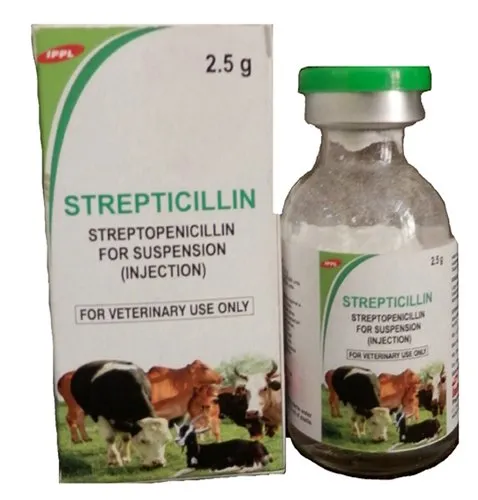Introduction to Strepto Penicillin
What Is Strepto Penicillin?
If you’ve ever dealt with a nasty bacterial infection, chances are your doctor mentioned antibiotics like penicillin or streptomycin. Now imagine combining both for even more punch—enter Strepto Penicillin. It’s not just one antibiotic but a combo powerhouse of two: Streptomycin and Penicillin.
Why Is It Called Strepto Penicillin?
The name is pretty straightforward. “Strepto” comes from streptomycin, and “penicillin” needs no introduction. Together, they form a one-two punch to knock out a wide variety of bacterial invaders. They’re often used together in clinical or veterinary settings when a broad-spectrum approach is needed.
The Power Duo: Streptomycin and Penicillin
Understanding Streptomycin
Streptomycin belongs to the class of antibiotics known as aminoglycosides.It was the first antibiotic remedy for tuberculosis, and it’s still useful today.
How Streptomycin Works
Think of streptomycin like a locksmith that jams the doors inside bacterial cells. It messes with the bacteria’s protein production, making it nearly impossible for them to grow or multiply.
Key Uses of Streptomycin
- Tuberculosis (TB)
- Plague (yes, it’s still a thing!)
- Brucellosis
- Certain respiratory infections
All About Penicillin
Penicillin is the poster child of antibiotics. Discovered by Alexander Fleming, it changed the game in treating infections.
How Penicillin Functions
Penicillin attacks the walls of bacteria, weakening them until they burst. Imagine inflating a balloon until it pops—that’s what penicillin does to bacteria.
Common Infections Treated
- Strep throat
- Skin infections
- Pneumonia
- Dental abscesses
How Strepto Penicillin Works Together
Synergistic Effect
When streptomycin and penicillin join forces, they don’t just double their power—they multiply it. This phenomenon is known as a synergistic effect, in which one increases the potency of the other.
When Are They Used Together?
- Severe mixed infections
- Livestock diseases like foot rot
- Cases where mono-antibiotic therapy fails
- Post-surgical infections
Medical Applications
Use in Human Medicine
Although less common in humans today due to antibiotic resistance and newer drugs, strepto penicillin still finds a role in treating:
- Endocarditis (heart lining infections)
- Resistant tuberculosis strains
- Complicated wound infections
Use in Veterinary Medicine
Here’s where this combo really shines. Strepto penicillin is often used in cattle, sheep, pigs, and poultry to treat:
- Mastitis
- Metritis
- Respiratory infections
- Foot rot
Administration and Dosage
Injectable Form
The most common form of strepto penicillin is injectable. Why? Because it ensures fast absorption and maximum efficiency, especially in animals.
Dosage Guidelines
Dosage depends on:
- Body weight
- Severity of infection
- Species (for veterinary use)
It’s essential to adhere to a medical or veterinary professional’s instructions—improvising can pose serious risks.
Benefits of Strepto Penicillin Combo
Broad-Spectrum Activity
Strepto penicillin tackles both gram-positive and gram-negative bacteria. That’s a wide battlefield, and this combo covers most of it.
Faster Recovery Times
Thanks to their combined modes of action, patients (human or animal) often recover quicker than with a single antibiotic.
Possible Side Effects
Common Side Effects
- Injection site pain
- Mild gastrointestinal upset
- Dizziness or headaches
Serious Adverse Reactions
- Allergic reactions (especially to penicillin)
- Hearing loss (from high doses of streptomycin)
- Kidney issues (rare but possible)
If unusual symptoms appear, contact your doctor or veterinarian without delay.
Resistance Concerns
Antibiotic Resistance Overview
Using antibiotics irresponsibly leads to resistance—a scary future where even minor infections can be deadly. That’s why judicious use is key.
Safe Usage Tips
- Never self-medicate
- Complete the full course
- Avoid overuse in animals
Storage and Handling
Shelf Life
Typically, the injectable version of strepto penicillin has a shelf life of 1 to 2 years. Always check the label.
Best Practices
- Store in a cool, dry place
- Keep out of direct sunlight
- Don’t freeze unless the label says so
Final Thoughts
So, is strepto penicillin worth the hype? Absolutely—when used correctly. It’s a proven, effective combo with broad-spectrum abilities, particularly in veterinary medicine. But like all antibiotics, it demands respect. Don’t overuse it, and follow guidelines to the letter.
Whether you’re treating livestock or dealing with a stubborn infection, strepto penicillin could be the solution.Keep in mind: significant power brings equally significant responsibility. Use it wisely!
FAQs
1. Can strepto penicillin be used for humans?
Yes, but it’s less common today. It’s mainly used for specific, serious infections under strict medical supervision.
2. Is it safe to use in pregnant animals?
In most cases, yes—but always consult a veterinarian first.
3. Can I store it in the fridge?
Yes, refrigeration is generally safe, but avoid freezing unless instructed.
4. What happens if I miss a dose?
Don’t double up. Just administer the next dose as scheduled and consult your healthcare provider or vet.
5. Is it effective against viral infections?
Nope! Strepto penicillin only works against bacterial infections—not viruses like the flu or common cold.

